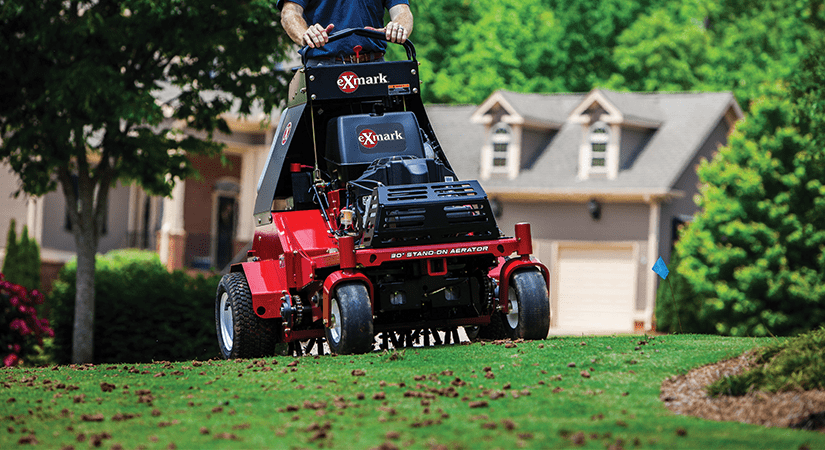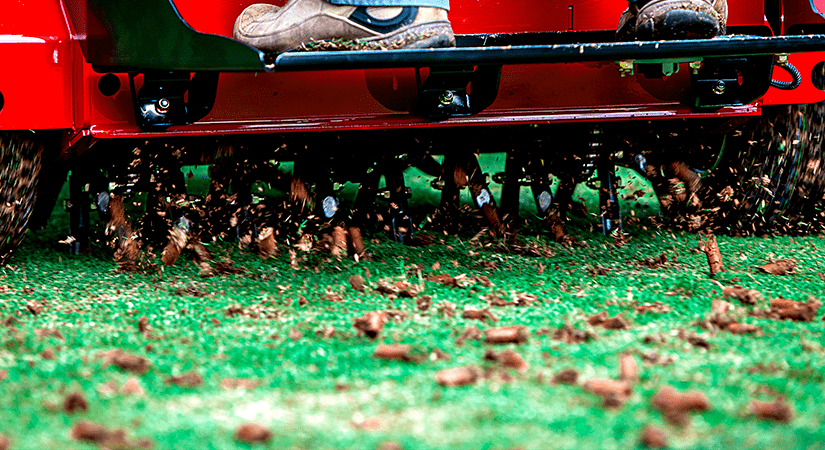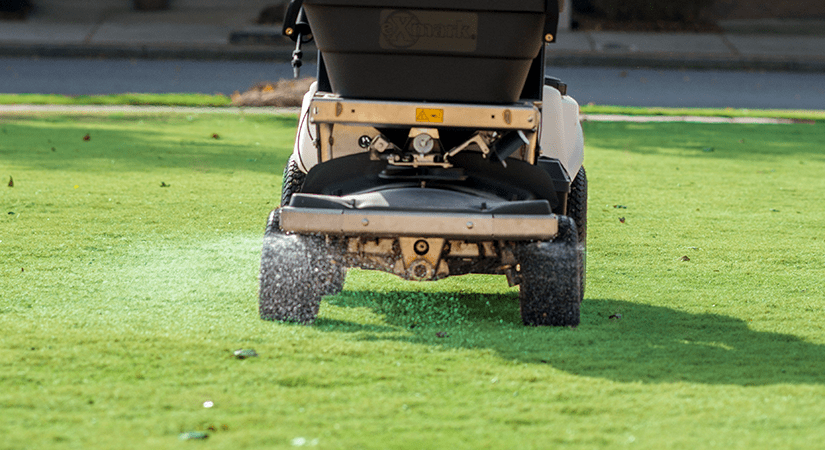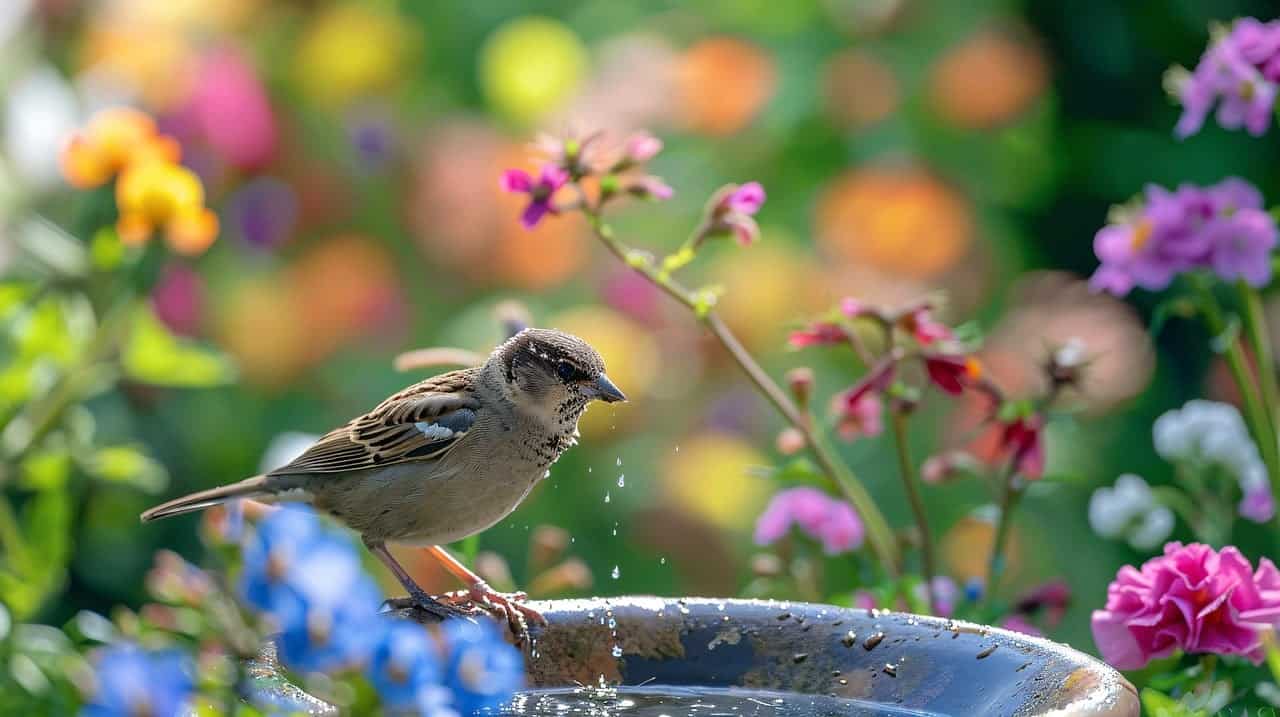To encourage a healthy lawn, aeration and overseeding should be a part of your lawn care plan. Aerating your lawn allows air to circulate through the soil. This can be achieved through core aeration or spike aeration. Overseeding is often paired with aeration to promote thick grass cover of your lawn. Professional landscapers typically aerate a lawn one to two times per year. This number varies depending on the type and condition of the soil. Aerating your soil will leave the soil less compact, “softer” and allow your lawn to grow lush, thick and healthy.

PHOTO CREDIT:Exmark
What is aeration?
Aeration is the process of creating holes in the soil to allow more airflow. The grass on your lawn exchanges oxygen and carbon dioxide through these holes. Along with the air, the holes fill with water and other nutrients (from fertilizer or natural sources). As these holes are spaced throughout the lawn, the roots of your grass will have all the resources it needs to thrive.


Benefits of aeration
When the roots of your grass are able to get the nutrients, water and air they need to survive, they build stronger networks in your soil. The strong the roots, the thicker the grass cover on your lawn. Thicker grass cover helps to keep weeds at bay, as you’ll have less bare spots where weeds tend to thrive. Another benefit of aeration services is softer soil. Compacted soil is harder and prevents your grass from getting the necessary resources. Thatch and other debris from your lawn builds up in the soil and basically starves your lawn. Breaking this layer of debris up through aeration keeps your lawn healthy all season long. Overseeding immediately after aeration helps promote thick and lush grass to cover your lawn. Taking advantage of the soil that is ready to provide water, nutrients and air, these seeds have the opportunity to grow strong and healthy. These services together will help fill in any bare spots in your lawn. In addition, the more densely packed the grass is, the less room for weeds to grow!
Process of aeration
During core aeration a core aerator is used to pull plugs of thatch and compacted soil out from your yard. The holes left in this process are what allow the air, water and nutrients to circulate through the soil and to grass roots. The plugs are typically left on the lawn, and by mowing or other means, they are mulched (broken down) and spread across the lawn. In their smaller form, this organic material can help feed your grass instead of blocking it. Depending on the size of your lawn, you may spend up to a few hours using the core aerator to complete this process. The equipment is fairly easy to use, but it can be very heavy to push across your entire lawn. Spike aeration is a similar process with typically lighter equipment. Spike aerators, like the name suggests, use spike to poke tiny holes in the soil. The holes left by spike aerators are much smaller, and do not reduce soil compaction like the core aerator does. Most landscaper recommend a core aeration in most situations. Spike aerators can be useful if you’d like to seed your lawn, as the seeds can take root in these holes. Overseeding involves spreading seed across your lawn, especially focusing on areas without dense grass coverage. Overseeding typically happens with aeration services since the soil is ripe for providing nutrients, air and water these seeds need to grow. After an aeration and overseeding service, your lawn will start to grow thick with lush grass.
When to aerate your lawn
Aerating your lawn is best when the soil is moist. The service should be performed after it has rained or the lawn should be watered in the days leading up to the service. The service itself is simple enough. You or the landscaping professional pushes the core aerator across the lawn. Many homeowners only pass the aerator over the most compact areas of the yard. We recommend hiring a professional who is used to the heavy equipment and can cover the entire yard if necessary.






